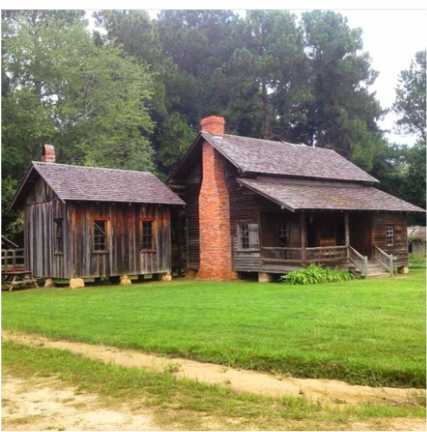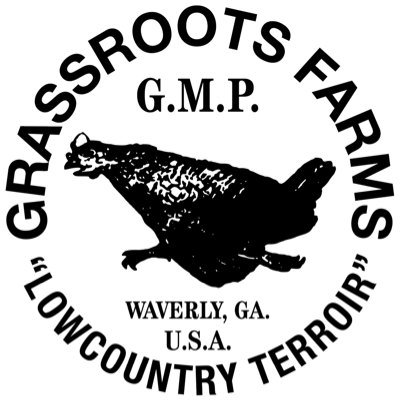|
By Sam Burnham @C_SamBurnham  A Georgia Home Built in Inaha Now at the Georgia Museum of Agriculture in Tifton. A Georgia Home Built in Inaha Now at the Georgia Museum of Agriculture in Tifton. I got a bit of a shock the other day when I came across a Rome News-Tribune story that reported that there were over 700 students that were considered homeless in the Rome City and Floyd County school systems. Considering that these two school systems instruct approximately 16,000 students, that's roughly 4% of the student population that is homeless. This sounds like a small number but both of these systems have multiple schools with fewer than 700 students. Technically you could build a mid-sized school in one of these systems with 700 students. That got my attention. But then my wife reminded me of the homeless student standards. On the first day of school, among all the other paperwork our kids brought home were forms to ask about the housing arrangements of students. These are the forms used to compile the data. There were questions about the parents being employed in agriculture. Questions about the permanence of the students' current living arrangements, and several more. This is how the homeless student totals are compiled. There is different criteria that classifies a student as homeless. So just because a student is classified doesn't mean they are sleeping in a car, a park, or under a bridge. The parent(s) may be migrant workers, there may be a living arrangement with friends or extended family, the students may be living in a county other than the one in which they attend school. So the numbers may be somewhat skewed. That is not to say there is not a serious problem with homelessness in Georgia. In 2014 the Macon Telegraph reported that neighboring Houston County had 327 homeless students during the 2013-14 school year. 63% of these students were living with extended family or friends. 25% were living in transitional housing such as motels or RV parks. 12% were living in shelters such as the Salvation Army Safe House or the Duke Avenue Homeless Shelter in Warner Robins. There was also a 2015 story in the Tifton Gazette that discussed problems in Tift and Effingham Counties. The Gazette highlighted a group called Family Promise, a New Jersey-based organization that works alongside faith-based groups, mostly local churches and volunteers from those congregations. Families are housed in Sunday school classrooms that otherwise sit empty six days of the week. These families receive services that result, according the the Family Promise website, in 74% of the participants finding permanent housing arrangements. Family promise has programs in several Georgia counties, including eight that could be considered rural. Rural counties in Georgia have a problem with homelessness. It may not be the type of homelessness we usually think about It's easy to buy into the stereotypes of homeless people living under bridges and begging for change in the shadows of Atlanta skyscrapers. It's another thing altogether to think of a kid trying to become an educated adult in a homeless shelter in Tifton or Rincon. That's not to downplay Atlanta's homeless problems, it's just pointing out the reality that it's not just a big city problem. While there are people rising to the occasion and seeing success in helping people get back on their feet, it's frustrating to know that the economy in rural Georgia is struggling the way these numbers suggest, especially considering our recent story about agriculture is the top industry in Georgia. These rural counties are producing substantially to our economy but it isn't keeping the people who live in these counties out of poverty. And a drive through rural Georgia is often the only research you need to see that poverty is a problem there. At the beginning of the 20th Century, a typical home in rural south Georgia was more than just a shelter for a family. The typical home was a self-sustaining organism in which a family provided for all their own needs. By today's standards it was still poverty, no doubt about that. But the family raised their food, built their shelter, provided their own entertainment, and, if times were good, had enough to sell or trade for a few luxuries. The humble house was often a one bedroom structure with a loft and a porch. The parents had the bedroom, the daughter slept in the loft away from predators and such, and the sons, if the weather was reasonable, slept on the porch. If the weather was less than cooperative, the boys slept in a common area in the house. The family all worked together to make sure the home worked. Again, not prosperous by our standards but they had a home. It stands to reason that a century of economic and technological advancement would have improved this model to make it more profitable, more feasible, and more of a reality for the people of rural Georgia. But now we have families, often single mothers and their kids according to the statistics in the articles mentioned earlier, that find themselves in motels or RV parks trying to survive. Our economic model and the expectations of society have changed many homes into simple domiciles that produce nothing but what money can be gleaned from a paycheck earned by working for someone else, if they are fortunate enough to find work in such an economically challenged area. While reality means that not everyone can operate a small business or farm, why is it not a better option for people in rural areas? If Georgia is going to spend thousands of dollars on sports stadiums, worthless streetcars, recruiting programs for major industries, and who knows what all else, why can we not allocate better resources to educational programs to produce workers for our biggest industry? Why do we not work to change the stigmas and expectations within our society that work against the economics of rural Georgia? If we are living in a world of progress why do we find ourselves not progressing? We need solutions. What we have been trying is not working. And if we consider that the answers to our problems with energy, medicine, food security, food deserts, and the supply of resources that our other industries need to thrive may all be lying in a fallow field in rural Georgia, then we are wasting time. It is ridiculous that the economy in our economic breadbasket is under-performing. That has to change.
0 Comments
Leave a Reply. |
Sam B.Historian, self-proclaimed gentleman, agrarian-at-heart, & curator extraordinaire Social MediaCategories
All
Archives
November 2022
|




 RSS Feed
RSS Feed
